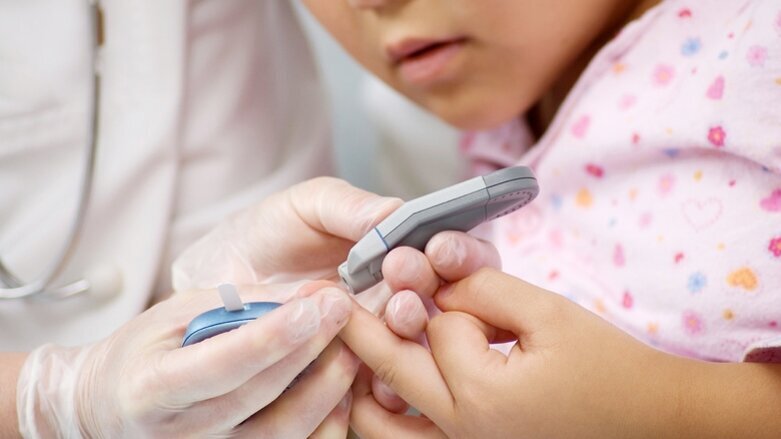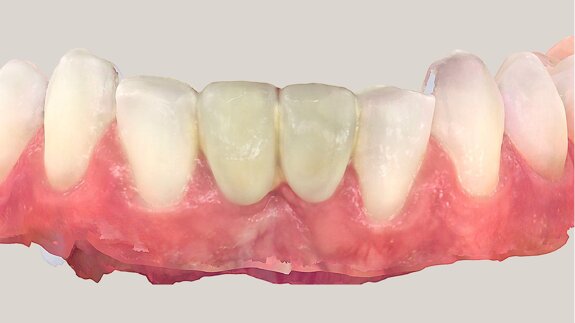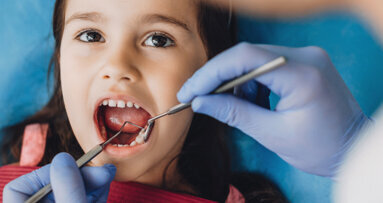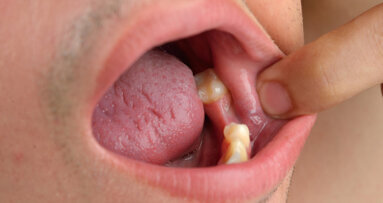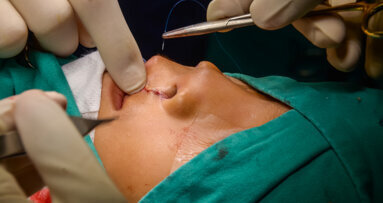BUFFALO, N.Y., USA: Although it is well-known that there is a link between poor oral health and diabetes, as well as prediabetes, in adults, no research has been conducted on oral health of children with obesity or diabetes to date. For the first time, a study has now shown that obese children with Type 2 diabetes are more likely to have poor oral health compared with normal-weight and obese children without the disease.
Nineteen normal-weight children, 14 obese children and 16 obese children with Type 2 diabetes aged 10–19 were included in the study. Each participant completed an oral health survey, underwent a clinical oral examination, and provided saliva for measurement of inflammatory markers and microbiome analysis.
Although the rates of missing, decayed and filled teeth were similar between the groups, the severity of gingival inflammation (assessed using a gingival index) was worst in the Type 2 diabetes group. While more individuals in the normal-weight and obese healthy group had an excellent or good gingival rating, none of the participants in the diabetes group had an excellent gingival rating.
Moreover, the children with diabetes were less likely to have had a dental visit within the last six months. “It turns out that while obese adolescents with Type 2 diabetes typically do have access to dental health, often through federally funded insurance, they do not routinely go to the dentist,” said Dr. Lucy Mastrandrea, associate professor in the Department of Pediatrics at the University at Buffalo, at which the study was conducted.
“The most important finding of this research is that, like adults, children with Type 2 diabetes appear more vulnerable to periodontal inflammation than normal lean or obese children,” said co-author Prof. Frank A. Scannapieco from the university’s Department of Oral Biology. “It provides justification for the need for additional attention to oral hygiene in children with Type 2 diabetes.”
Mastrandrea is now interested in exploring whether better dental care right after diagnosis might help mitigate the trend toward more periodontal disease in children with Type 2 diabetes in a longitudinal study. She is also interested in whether the same trend holds true for children with Type 1 diabetes.
The study, titled “Salivary inflammatory markers and microbiome in normoglycemic lean and obese children compared to obese children with type 2 diabetes,” was published online on March 2 in the PLOS ONE journal.
Tags:
BUFFALO, N.Y., USA: New study findings indicate that postmenopausal women with a history of periodontal disease are more prone to develop cancer. Examining ...
LONDON, UK: Primary immunodeficiency (PID) is characterised by a missing or poorly functioning part of the body’s immune system. Inherent from birth or ...
MELBOURNE, Australia/LONDON, UK: It is widely known that poor nutrition is a risk factor for frailty. Similarly, the link between nutrition and oral health ...
CHICAGO, U.S.: An interaction between diabetes and oral health has been investigated by numerous studies, and according to U.S. researchers, a link between...
GENEVA, Switzerland/NEW YORK, US: Orofacial clefts are the most common birth defects in the US. Children with orofacial clefts can be at an increased risk ...
DUBAI, UAE: Improved medical care has led to a higher life expectancy for individuals with Down’s syndrome, resulting in an increased need for dental care...
DURBAN, South Africa: As the number of reported cases of children with autism spectrum disorder (ASD) continues to climb across the globe, the special ...
Dr. Sammy Noumbissi, founder and President of the International Academy of Ceramic Implantology (IAOCI), is currently organizing the academy’s 7th annual ...
HELSINKI, Finland: Scientists have previously identified obesity and increasing age as risk factors for gestational diabetes mellitus (GDM). Some scholars ...
GHAZIABAD, India: Nearly half of all children in India have early childhood caries (ECC), and research shows that reducing ECC incidence requires the ...
Live webinar
Mon. 12 January 2026
9:00 am EST (New York)
Prof. Judith Jones D.D.S; M.P.H., Prof. Kakuhiro Fukai D.D.S., Ph.D, Dr. Bathsheba (Bethy) Turton
Live webinar
Wed. 14 January 2026
12:00 pm EST (New York)
Dr. Théo Laplane, Dr. Robert Gottlander DDS
Live webinar
Fri. 16 January 2026
12:00 pm EST (New York)
Live webinar
Mon. 19 January 2026
1:00 pm EST (New York)
Philipp Kopp, Michael Seeber
Live webinar
Thu. 22 January 2026
2:00 pm EST (New York)
Dr. Nicola M. Grande DDS, PhD
Live webinar
Wed. 28 January 2026
8:00 am EST (New York)
Live webinar
Wed. 28 January 2026
11:00 am EST (New York)
Prof. Dr. Jan-Frederik Güth



 Austria / Österreich
Austria / Österreich
 Bosnia and Herzegovina / Босна и Херцеговина
Bosnia and Herzegovina / Босна и Херцеговина
 Bulgaria / България
Bulgaria / България
 Croatia / Hrvatska
Croatia / Hrvatska
 Czech Republic & Slovakia / Česká republika & Slovensko
Czech Republic & Slovakia / Česká republika & Slovensko
 France / France
France / France
 Germany / Deutschland
Germany / Deutschland
 Greece / ΕΛΛΑΔΑ
Greece / ΕΛΛΑΔΑ
 Hungary / Hungary
Hungary / Hungary
 Italy / Italia
Italy / Italia
 Netherlands / Nederland
Netherlands / Nederland
 Nordic / Nordic
Nordic / Nordic
 Poland / Polska
Poland / Polska
 Portugal / Portugal
Portugal / Portugal
 Romania & Moldova / România & Moldova
Romania & Moldova / România & Moldova
 Slovenia / Slovenija
Slovenia / Slovenija
 Serbia & Montenegro / Србија и Црна Гора
Serbia & Montenegro / Србија и Црна Гора
 Spain / España
Spain / España
 Switzerland / Schweiz
Switzerland / Schweiz
 Turkey / Türkiye
Turkey / Türkiye
 UK & Ireland / UK & Ireland
UK & Ireland / UK & Ireland
 Brazil / Brasil
Brazil / Brasil
 Canada / Canada
Canada / Canada
 Latin America / Latinoamérica
Latin America / Latinoamérica
 USA / USA
USA / USA
 China / 中国
China / 中国
 India / भारत गणराज्य
India / भारत गणराज्य
 Pakistan / Pākistān
Pakistan / Pākistān
 Vietnam / Việt Nam
Vietnam / Việt Nam
 ASEAN / ASEAN
ASEAN / ASEAN
 Israel / מְדִינַת יִשְׂרָאֵל
Israel / מְדִינַת יִשְׂרָאֵל
 Algeria, Morocco & Tunisia / الجزائر والمغرب وتونس
Algeria, Morocco & Tunisia / الجزائر والمغرب وتونس
 Middle East / Middle East
Middle East / Middle East
























